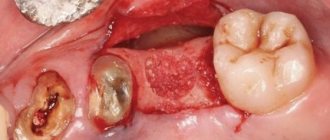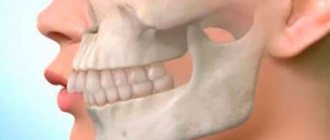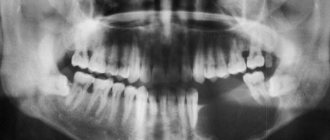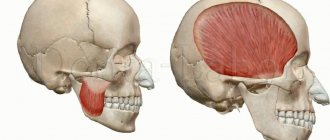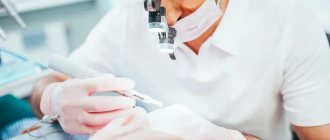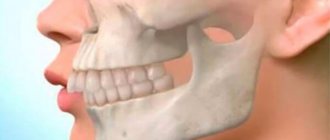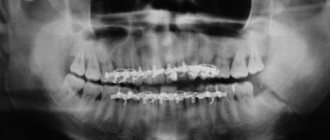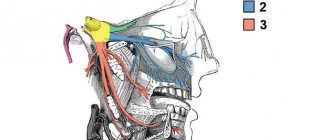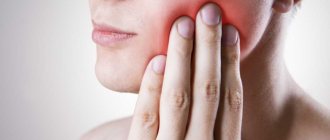Contour plastic surgery is a technique for modeling appearance and correcting age-related changes by injecting fillers (preparations based on stabilized hyaluronic acid).
Filler plastic surgery is successfully used for:
- restoration of facial volumes lost with age,
- correction of wrinkles of various depths (nasolabial, glabellar, paraorbital, perioral),
- facial oval modeling,
- eliminating facial asymmetry,
- correction of the shape and volume of lips, cheekbones and chin.
Today, contouring is the most popular procedure in the field of beauty, which has no analogues in effectiveness among methods without the use of surgical intervention.
Areas and applications
Volumetric 3D modeling and wrinkle correction
Volumetric contour modeling is the restoration of facial volumes lost with age. Age-related changes affect not only the skin: with age, resorption (destruction) of bone tissue occurs, soft tissues lose volume, as a result of which some areas of the face become sunken.
Contour modeling helps restore volumes lost with age, get rid of wrinkles and creases (nasolabial folds, “marionette lines”, nasolacrimal grooves, vertical creases between the eyebrows), correct visible defects, and correct facial asymmetry. Contour plastic surgery of the periorbital zone helps to get rid of most problems in the area around the eyes - eliminate dark circles and bags under the eyes, smooth out wrinkles, and reduce hernias.
In just 1 procedure, a visible effect of rejuvenation and lifting of the middle and lower third of the face is achieved.
Cheekbone correction
Contour plastic surgery of the cheekbones allows you to make the cheekbones more expressive, harmonize the proportions of the face, creating the correct geometry, and make the image more impressive. And when introducing filler using the cannula technique, you can simultaneously add volume to the cheekbones and eliminate nasolabial folds.
Correction of the chin and angle of the lower jaw
The importance of the chin in appearance is often underestimated. Meanwhile, this is the most important part on which depends how toned the entire face is perceived. A weak or sloping chin does not “hold” the lower part of the face well: the oval “floats” faster, the cervical-chin angle is blurred, and folds appear in the form of a double chin. Timely correction of the chin and plastic contouring of the face with fillers can improve the oval of the face, eliminate jowls, emphasize the clarity of lines, preserving youth for many years.
Correction of lip shape and volume
Correction of lips using the injection of hyaluronic acid allows you to eliminate age-related changes in the lips (loss of volume and clarity of the contour, purse-string wrinkles), lift the corners, make the lips more voluminous and sensual, and correct asymmetry. Lip surgery with fillers is relevant not only for women; for men, we use special fillers with a lower density, which do not provide noticeable volume, but effectively solve aesthetic problems and fight aging.
What a beautiful jaw in men
Surely, when you hear the words “masculinity,” the first faces that come to mind are the Marlboro cowboy, Tom Cruise, or Sean O’Pry.
But if nature did not bother to develop a man’s chin area, then his appearance evokes completely different associations. Excessive softness, indecision, perhaps even weak character - these are the first impressions of a face with a small chin and soft lines of the lower jaw, even if their owner himself feels quite courageous and strong.
Expert comment:
“The reason for this perception lies in our subconscious.
Sex hormones are primarily responsible for how developed the bone structure of the lower jaw is. Protruding brow ridges, a strong-willed chin and a massive, square, well-developed jaw are testosterone traits. This is a sign of a healthy and strong man.
Such a man always attracts attention as a promising partner in his personal life and in business.
Enlargement of the jaw and chin brings the external appearance into complete harmony with the internal state of a person.”
Vasiliev Maxim, plastic surgeon.
Fillers for contouring
Preparations for contouring differ in the degree of density of hyaluronic acid in the composition. Less viscous preparations are used for biorevitalization and mesotherapy, denser ones are used for facial contouring, volumization of lips and cheekbones, and correction of deep wrinkles.
Modern fillers with hyaluronic acid in their characteristics are close to stable implants: they reliably hold their shape, do not change their location after injection and maintain excellent results for a long time. And the high plasticity of the preparations guarantees a natural result and eliminates the possibility of tactile sensation.
Today, EMC uses the following drugs for contouring:
- Juviderm 2
- Juviderm 3
- Juviderm 4
- Juviderm VolBella,
- Juviderm Voluma
- Teosyal Ultimate,
- Teosyal Ultra Deep,
- Teosyal KISS,
- Teosyal Global Action,
- Teosyal Pure Sense Redensity II,
- Teosyal R.H.A.
- Belotero Basic,
- Belotero Soft,
- Belotero Intense,
- Restylane Lipp.
The doctor selects the drug individually, depending on the type of correction and indications.
REHABILITATION AFTER CHIN PLASTY
After the operation, the patient remains in the clinic until the next morning. The chin area is fixed with a special “invisible” plaster (without using a bandage).
Rehabilitation after chin correction takes up to 14 days. At this time, it is necessary to carefully observe a gentle regimen, avoid intense physical activity, and avoid sudden head movements.
In the first days after surgery, patients may experience swelling of the chin and discomfort in the suture area. To reduce unwanted effects and speed up healing, the doctor prescribes special medications, and physical therapy may be prescribed.
Contraindications
The high safety of the gels virtually eliminates the possibility of complications after the procedure. However, in order to avoid an individual reaction of rejection by the body, contour plastic surgery is contraindicated in the following cases:
- diseases of the thyroid gland (consultation with an endocrinologist is required);
- blood clotting disorders;
- infectious diseases;
- skin diseases;
- the presence of other drugs in the filler injection area (be sure to tell the doctor about all the injections you have done before).
DO YOU NEED THE BEST CHIN PLASTIC SPECIALIST IN MOSCOW?
Plastic and maxillofacial surgeon Ekaterina Sergeevna Kudinova is a candidate of medical sciences, a leading Russian specialist in the field of plastic surgery of the chin, lower jaw and nose.
As a leading researcher at the best Moscow clinical center of otorhinolaryngology, Ekaterina Sergeevna performs complex facial reconstructive surgeries for patients injured in accidents. This unique experience helps her achieve excellent results in relatively simpler aesthetic chin surgery and complex profile correction surgeries.
Delicacy, tact and the ability to empathize allow the doctor to gain trust and find mutual understanding with each patient.
You can make an appointment for a consultation with Ekaterina Sergeevna Kudinova by calling 1 or. You can also leave a request through the online consultation form on the website.
Preparation for procedures
In order to prepare for the contouring procedure, you do not need to comply with many restrictions.
How is contouring done with fillers?
- The doctor examines the patient and discusses the future correction plan.
- Then he demonstrates the sealed packaging of the drug (the drug must not have been previously opened) and opens it.
- Many preparations containing hyaluronic acid already contain an anesthetic. Unpleasant sensations can be observed only at the first contact of the needle with the skin. But if the patient wishes, an anesthetic gel can be applied in advance.
- Treats the skin with an antiseptic and begins administering the drug.
- The facial contouring procedure takes 30-60 minutes. After administration of the drug, slight swelling of the tissues may be observed, which disappears within 2-3 days.
CHIN PLASTY – ANTI-AGING EFFECT
After chin augmentation surgery, almost all patients note that their face looks not only more beautiful, but also younger. Everything is very simple! The increased size of the chin protuberance compensates for the missing volume of subcutaneous tissue, thanks to which all folds of the skin are straightened, jowls and wrinkles disappear, and the skin under the chin is tightened. But it is also prevention. Let's reveal a secret - people with a small (sloping) chin age earlier and more noticeably.
Chin plastic surgery (especially augmentation mentoplasty) is popular not only among women, but also among men. After all, it’s hard to imagine a man’s face without a beautiful, strong-willed chin.
Chin surgery is often performed simultaneously with rhinoplasty. If a small chin is adjacent to a large nose (the “parrot profile” effect) or the patient does not like the predatory profile with a hooked nose and a protruding chin, a comprehensive correction can be performed. This operation is called profiloplasty. We write about complex chin and nose surgery here.
Chin augmentation can be performed either with or without an implant (due to rotation of the bony protrusion of the chin). And, of course, Dr. Kudinova can not only enlarge, but also (which is much more difficult!) reduce your chin.
Kudinova Ekaterina Sergeevna
Candidate of Medical Sciences, certificates in plastic and maxillofacial surgery. International expert in face and neck lifts, eyelid surgery, eyebrow surgery, chin surgery, etc.
To learn more
Side effects
Inflammatory processes, fibrosis, necrosis and other complications occur most often due to insufficient qualifications of the specialist who performed the procedure or due to the fault of the patient who did not inform the day before the procedure about the presence of previously administered drugs.
If the gel is introduced too superficially, the consequence of contouring may be its translucency or migration - an experienced cosmetologist will not allow this to happen. It is important to remember that contouring is a serious cosmetic procedure that must be performed exclusively under sterile conditions by a doctor with the appropriate certification and medical education.
Renaissance and plastic surgery
So, how do you understand that the lower third of the face is underdeveloped and needs correction? Take a full-face photo of yourself and mentally or with a pencil, divide your face into three parts horizontally. The upper third of the face is from the line of the nose to the middle of the eyebrows, the middle third is from the middle of the eyebrows to the tip of the nose, and the lower third is from the base of the nose to the chin. Now take a ruler and measure these three parts.
In a harmoniously beautiful face, the distance from the hair growth to the eyebrow line, from the eyebrow line to the base of the nose and from the base of the nose to the chin is approximately the same.
Even Renaissance artists showed that on a proportional face these three parts are equal. If one of them is significantly larger or smaller than the others, the face is perceived as inharmonious.
FAQ
At what age is it recommended to have contour plastic surgery?
Injection contour plastic surgery has no age restrictions. If there are indications, the first correction can be made starting from the age of 18.
What is better for facial contouring?
All preparations used in EMC are of high quality and have proven themselves in contouring with hyaluronic acid.
Is it possible to tighten the contour of the face without surgery?
Yes, by introducing fillers you can correct the oval of the face, harmonize proportions, and make the angle of the lower jaw more expressive.
Non-surgical correction of the angles of the lower jaw with fillers
Is it possible to increase the angles of the lower jaw without surgery? If the bone deficiency is minor, we suggest trying fillers in the lower jaw.
Temporary increase in the angles of the lower jaw with filler.
Performed: upper blepharoplasty, ️installation of a chin implant, medial and lateral platysmaplasty with neck lift through an incision in the earlobes.
Performed by a surgeon - Maxim Vasiliev .
At Platinental we use Voluma, Radiess or Juvederm fillers for this purpose - they are quite dense, safe and create the desired contour for a long time.
The main disadvantage of increasing the angles of the lower jaw with fillers is that the effect is temporary: the gel is completely absorbed, and after two years the fillers will need to be reinjected.
However, this procedure can be considered a rehearsal. If you like the result, it makes sense to consider permanent correction of the angles of the lower jaw with implants.
Discussion
Increasing complexity of the surgical technique increases the risk of errors and possible complications, the most likely of which are asymmetries and instability of fragments. That is why we have described in detail the fixation technique, which, in our opinion, is the key to a favorable outcome of the operation and the course of the postoperative period. In our sample, there were complications in 3 cases: 1 suture dehiscence (8th day after surgery) and 2 peri-implantitis (12th and 27th days) at the site of installation of the bone block in the diastasis. In these cases, we postpone wound revision for at least 3-4 weeks from the moment of surgery (until the lower fragment is stabilized) and limit ourselves to conservative treatment and drug therapy.
Adding volume (fillers, lipofilling)
Filler injections are the most common and fastest solution. The angles of the jaw (and, if necessary, the shape of the chin) are usually formed with a dense filler (a preparation based on hyaluronic acid or calcium hydroxyapatite) so that it holds its shape longer.
It is administered using a special blunt needle - a cannula, which allows less trauma to the tissue. The procedure takes about half an hour, is well tolerated and does not require long-term rehabilitation. However, this method works, as a rule, on fairly thin faces, where it gives a pronounced result that lasts up to one and a half years.
As for increasing the volume of the cheekbones with fillers based on hyaluronic acid, if you are prone to swelling and some diseases that provoke them (endocrine, renal), their placement should be abandoned.
Hyaluronic acid tends to attract moisture and thus can aggravate the situation, giving the face a swollen, unkempt appearance.
The missing volume can also be added using lipofilling – transplantation of the patient’s own fat from donor areas (hips, abdomen). The fat is removed using a cannula, cleaned and injected into the required areas. However, we must take into account that not all fat takes root in a new place, which requires repeated procedures.
Today, most of us have to spend a lot of time sitting at the computer. Watch your posture - stooping, lowered head, raised, tense shoulders - all this contributes to the rapid “erasing” of clear lines between the chin and neck, the so-called “angle of youth”, which ideally corresponds to 90˚.
Causes
Asymmetry can be detected at any age; usually in the early stages, the problem is identified after the birth of the child, two to three days later. At this time, the skull should already have taken on a normal shape, so the violation will be noticeable immediately. The causes of this phenomenon are birth injuries. If parents do not follow the recommendations for caring for the baby, there is a likely risk of developing asymmetry due to the child being constantly in one position. Such problems do not require serious intervention; they are usually eliminated by massage.
Most often, asymmetry is caused by the following congenital reasons:
- congenital anomalies;
- muscular dystonia, accompanied by impaired muscle contractions, development of TMJ, crossbite;
- hypertonicity of the muscular frame;
- the presence of clefts in the upper lip, causing the formation of a hollow in the middle part of the face;
- malformations during pregnancy;
- congenital anomalies;
- pathologies of skeletal development.
Acquired factors include:
- bite problems that develop due to poor nutrition, bad habits and other reasons;
- defects of the temporomandibular joint;
- tumors that form in the jaw area (osteoma, various types of odontoma, salivary stones);
- injuries to muscle and bone tissue, including bone fractures;
- impacted units;
- periostitis;
- trauma during childbirth;
- inflammatory processes affecting the periodontium.
In addition, the causes of asymmetry can be nerve paresis, curvature of the spinal column, and diseases of the ENT organs. In adult patients, these factors are:
- congenital problems that were not corrected in childhood;
- ankylosis of the joint, accompanied by degradation of cartilage tissue;
- arthrosis, dystrophic changes;
- limited movement of the muscles of the lower jaw;
- formation of benign or malignant tumors;
- various defects of the jaw system;
- damage, underdevelopment of the VN or LF;
- diseases affecting the salivary glands;
- purulent processes in the periosteum;
- abscesses in the area of the tooth root;
- cross bite.
Provoking factors for the development of asymmetry include:
- damage to brain tissue and membranes;
- cysts in the sinuses;
- adenomas;
- botulism;
- poisoning with certain chemicals;
- purulent mumps and others.
Diagnostics
To select a treatment regimen, the doctor conducts an initial examination:
- clarifies the medical history, conducts an examination;
- physical examination is used to assess anomalies in different positions, determine the presence of tumor formations, edema, injuries and consequences, the condition of teeth, oral tissues;
- X-rays are used to assess the condition of the nasal sinuses, rows and individual units; if necessary, examination of the spinal column and skull is prescribed.
- sonography of the salivary glands and sinuses is performed;
- for a detailed examination of the tissues, the dentist may refer the Patient to an MRI or CT scan;
- analysis of bite, supercontact (if any), occlusion is performed using a complete orthodontic examination.
Additionally, consultation with the following specialists may be required:
- neurosurgeon (prescribed CT scan to examine the brain);
- neurologist (the innervation of the muscles of the facial area is assessed, including the movement of the eyebrows, cheeks, eyelids and others);
- otolaryngologist (audiometry, puncture, tuning fork and other types of studies are performed).
The conclusion is made based on the results of the examination; additional laboratory tests may be prescribed, for example, if bacterial or infectious lesions are suspected. A treatment plan is drawn up only after the diagnosis has been completed and the results have been carefully reviewed.

